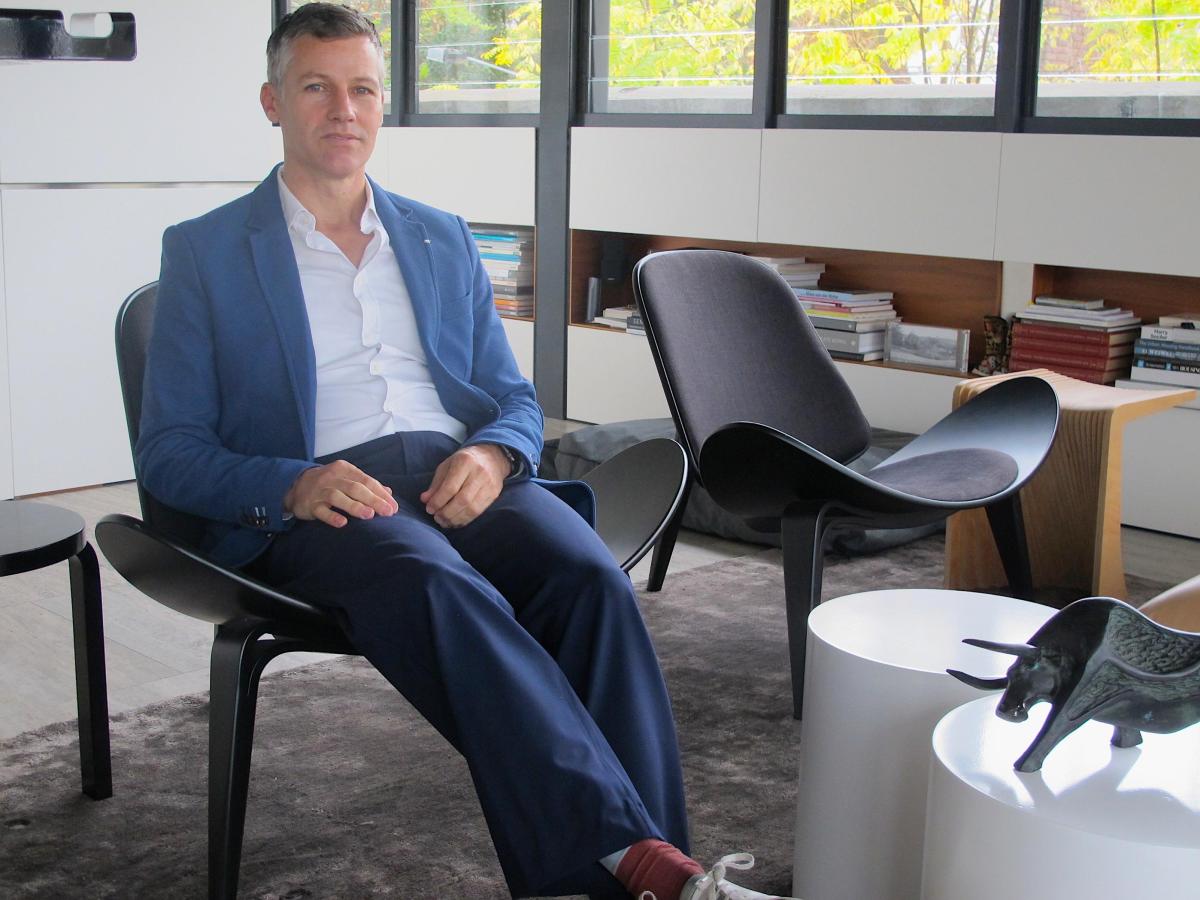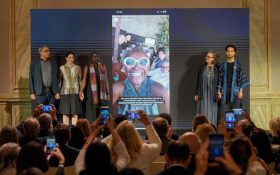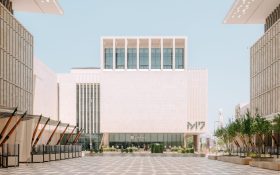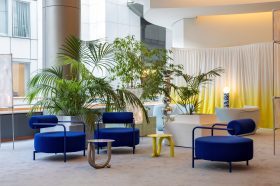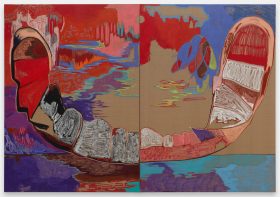William Smart became an architect as a result of falling in love with the design of planes and beautiful cars.
‘What I love about them is how they embrace technology; how they evolve all the time and improve their efficiency, their safety – they must be beautiful and bring all those things together,’ the Sydney-based architect told ArtsHub.
Such traits are also the cornerstones of good architecture.
Smart is also influenced by sculpture, although his love for three-dimensional art works is is less about technology and more ‘about the beauty of light and shape,’ he continued. ‘I am really influenced by sculpture from the 1960s – that sculpture that is gusty and unpolished.’
It is this combination of interests that sits at the foundation of Smart’s philosophy. He told ArtsHub that he ‘approaches design and buildings from the inside out.’ Only when he has finished the inside he will then start on the skin of a building.
Smart, and his Sydney-based firm Smart Design Studio, last week received The Luminary award – recognising the contribution of an industry icon – at the Asia Pacific INDE2017 Awards. He and his firm also received two additional awards, The Building and The Best of the Best for Smart signature residency, Indigo Slam, adding to a string of awards received by the firm since it was founded.
ArtsHub caught up with Smart recently to chat about the landscape of contemporary architecture – from its Sydney footprint, to how he copes with daily challenges.
William Smart on ArtsHub’s YouTube channel; produced by Gina Fairley
Bespoke not Bunnings
Smart explained of his philosophy: ‘Our architecture is inspired by pure Modernism, but believe not that “form follows function” so much as “form has a function”.
‘What I try to think of is how can I build an extraordinary atmosphere. I want to create places with those moments where you feel uplifted and inspired, and how you do that is through planning, by understanding circulation and all that is supported by incredible detailing,’ he said.
‘But in our work the detailing is downplayed. It is mostly about the spaces and the quality of light we are trying to create. Often the interiors are quite gentle.’
Smart said the project he is most proud of is Indigo Slam, the residence of collector and art philanthropist Judith Neilson, located just around the corner from her White Rabbit Gallery in Chippendale, Sydney.
The building was completed last year and has won over 14 significant awards for its design.
Smart described the building as ‘a piece of sculpture to be lived in,’ where the main decorative element is light.

Facade of Indigo Slam in Chippendale, Sydney. Courtesy and Copyright Smart Design Studio
‘Indigo Slam was that dream commission when someone come along and says let’s make something extraordinary; let’s make it last for more than 100 years; let’s make it as manual as possible and let’s build the best house in Australia … or the world. That is not a threatening challenge but an opportunity to embrace.’
Inspiration and vision are key to a good building, and Smart says it all starts with the site – and a feeling that he might get triggered from that play of site and light.
His advice to an emerging architect or designer is to look beyond compromise. ‘I try to instil in our team to ask for what you want and not be shy to ask for what you want. If the building needs to be concrete then tell Council it needs to be concrete.
‘What I have sought to do with our practice is to not do things that are ordinary or boring or conventional, but seek to do something that is exceptional or has a special quality, and that takes a lot of energy.
‘My theory is it is probably twice as much work to do something exceptional as something very good; it is like being an elite athlete in a way,’ he said.
Balance of art and architecture in creating 21st century cities
In a world where Starchitects have shaped the way that we engage with art galleries and museums, Smart warns that sometime the building can go too far.
‘I think in the world of art galleries people now go for an experience – they don’t only go to see a piece of art, they go to experience the space, meet other people, use the book shop and have a coffee.
‘So the role of buildings in that world is to make wonderful meeting spaces that deliver beautiful light to the art work – to make the art work feel comfortable,’ said Smart.
‘But it can go too far the other way. You can build architecture too strong, so that the artwork is uncomfortable, or a building that can be so practical and functional that the spaces are boring. For us there has to be a dialogue between art and architecture.’
Smart feels that the same balance occurs with great cities.
Sydney is currently in a process of enormous flux as it strives to be a great global creative destination. So what is good design in such a city?
‘What I feel is, great design in Sydney makes the place better. There is a lot of investment in reinforcing the character of areas; a lot of investment in quality of materials and quality of design, but also beautiful buildings. The city is getting better and the standards are getting higher. We have come to think that this is the norm – but it is not,’ he concluded.
